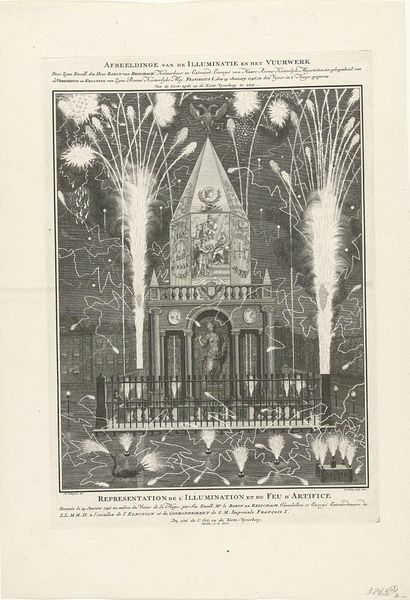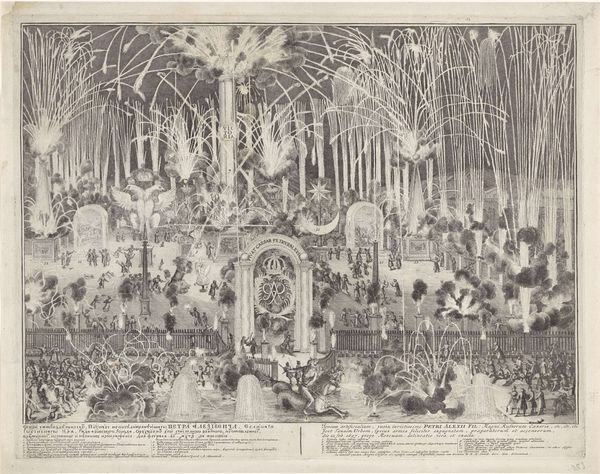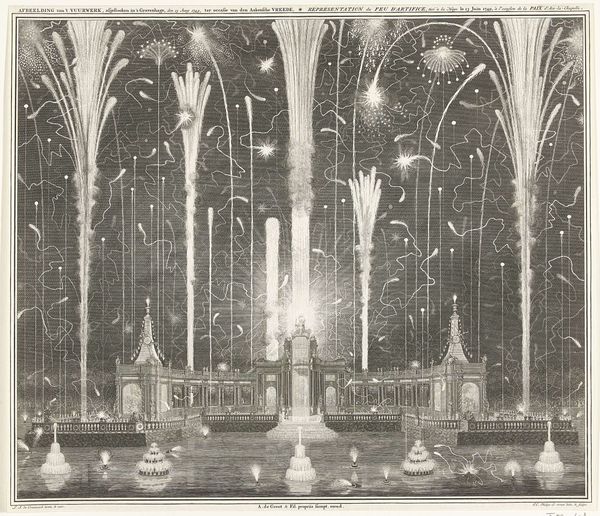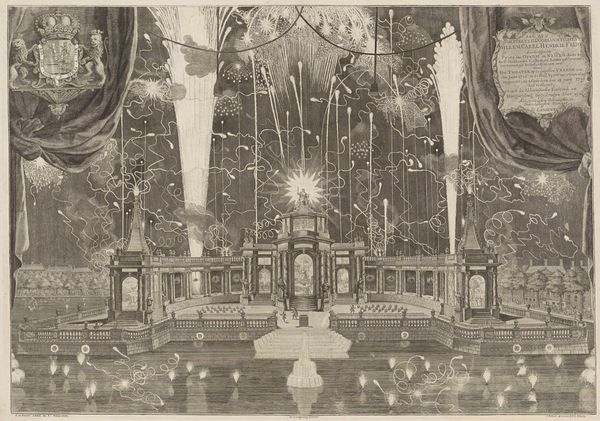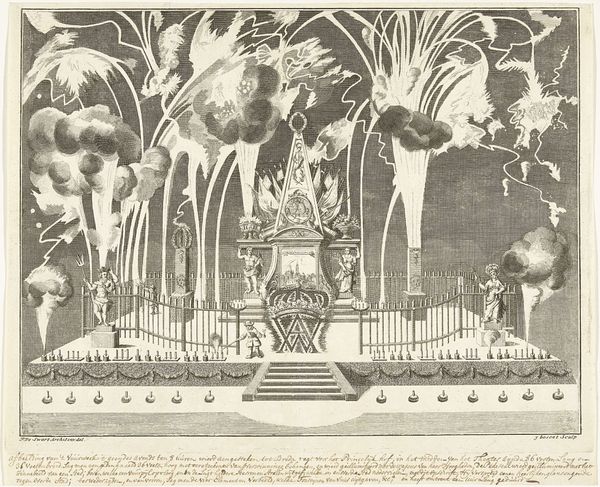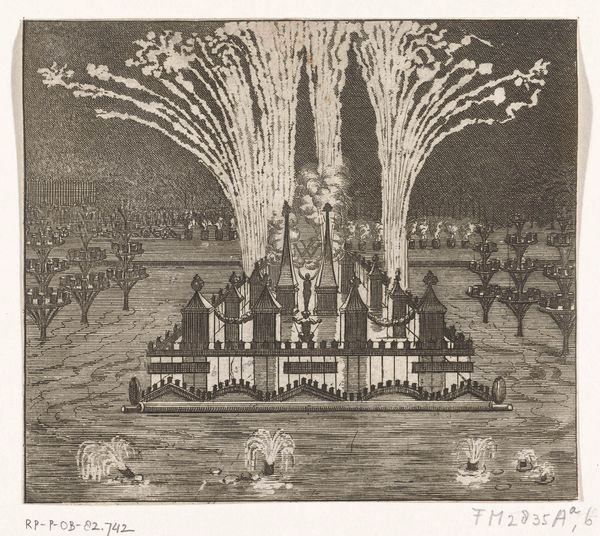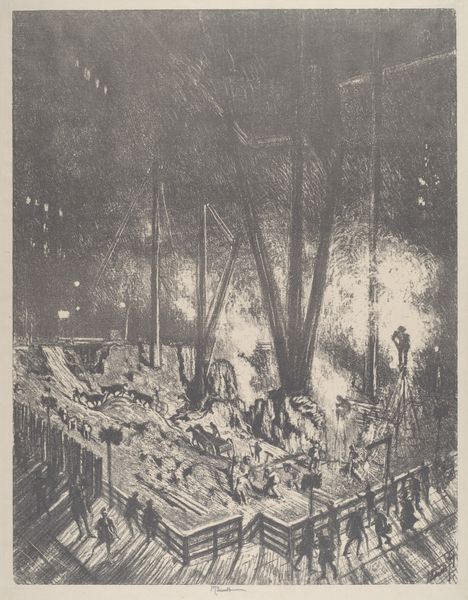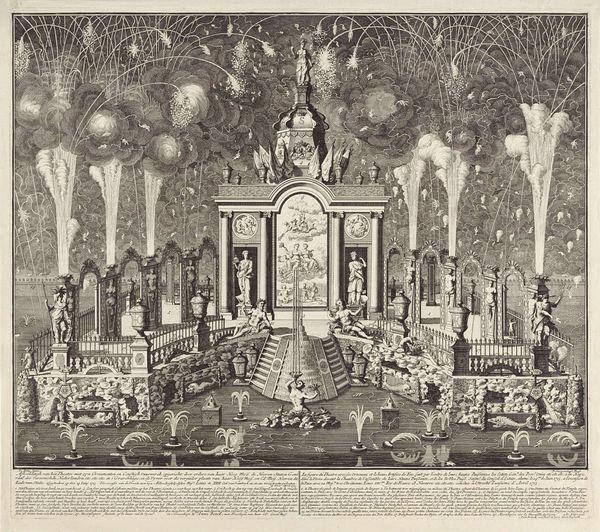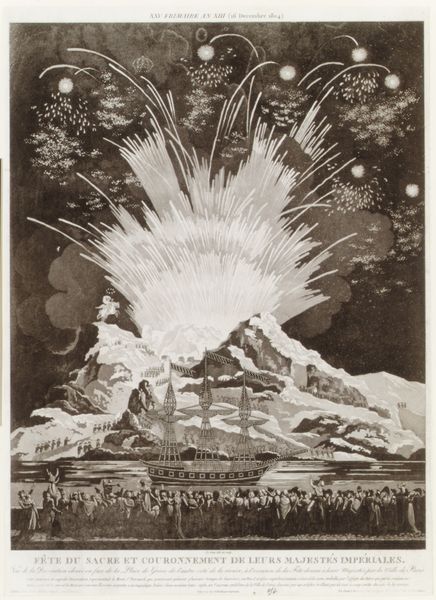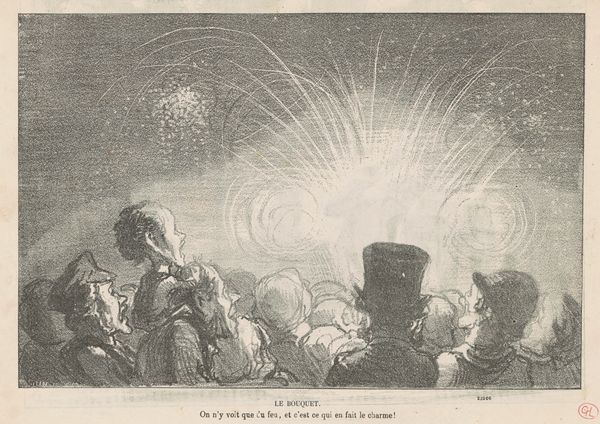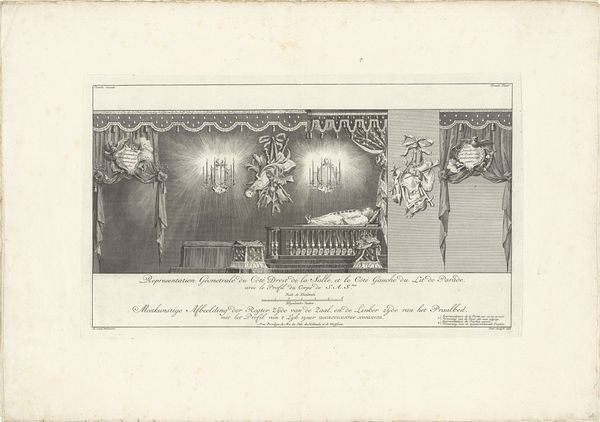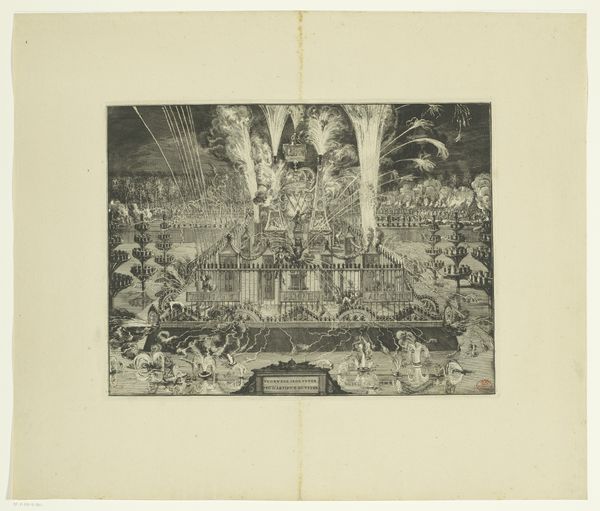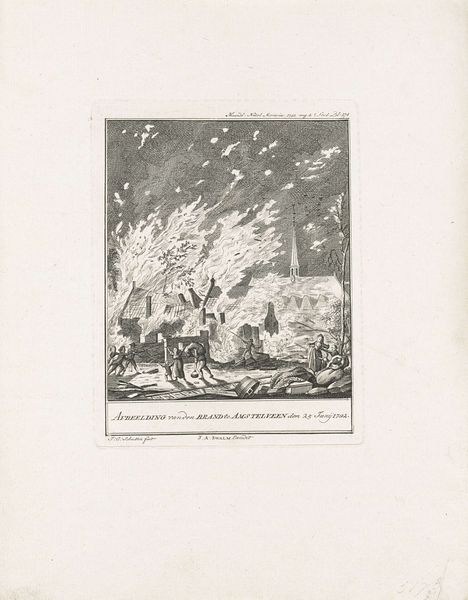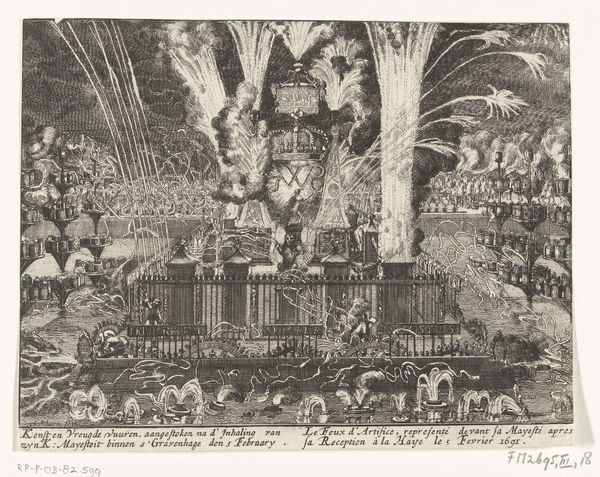
Vuurwerk afgestoken op 15 oktober 1745, de naamdag van Maria Theresia, in opdracht van Anthoni de Groot 1745 - 1747
0:00
0:00
print, engraving
#
baroque
#
ink paper printed
# print
#
old engraving style
#
cityscape
#
history-painting
#
engraving
Dimensions: height 398 mm, width 238 mm
Copyright: Rijks Museum: Open Domain
Curator: Good morning. Today we're examining "Vuurwerk afgestoken op 15 oktober 1745, de naamdag van Maria Theresia, in opdracht van Anthoni de Groot"—a work crafted between 1745 and 1747 by Jan Caspar Philips, now residing here at the Rijksmuseum. Editor: My first impression is of organized chaos. The print bursts with dynamism, yet the layout is quite regimented, almost geometric in its arrangement. It’s quite stark—black and white creating a surprisingly celebratory feel. Curator: Precisely. This engraving wasn't just about aesthetics; it was commissioned to celebrate Maria Theresa's name day. Anthoni de Groot, a prominent figure, orchestrated this display. These spectacles served as powerful tools to project imperial power and loyalty in the Dutch Republic. The politics of spectacle, always fascinating. Editor: The engraving's formality underscores that political function. See how Philips used lines and perspective to guide our gaze? The fireworks form lines directing the eye toward the "MT" monogram crowned above, a symbol of Maria Theresa herself. The dark sky serves as an excellent contrast. Curator: Indeed. Engravings like these democratized access to such events, disseminating political messages far beyond those who witnessed the fireworks firsthand. Editor: Though democratic in dissemination, the hierarchy is palpable. Look at the figures setting off the fireworks, small and subservient compared to the grand display intended to reflect glory back onto the monarch. There’s a kind of structured inequality literally built into the visual language. Curator: I concur. The print’s historical value lies in its depiction of these power dynamics—revealing much about 18th-century social structures. Furthermore, it’s an exquisite example of printmaking technology and distribution within that period. Editor: It's captivating how a celebratory artwork, analyzed closely, exposes such nuanced commentary on authority and control through its arrangement and sharp contrasts. A compelling study in monochrome! Curator: Agreed. A confluence of celebration, power projection and the technology of dissemination makes this a piece worth examining.
Comments
No comments
Be the first to comment and join the conversation on the ultimate creative platform.
